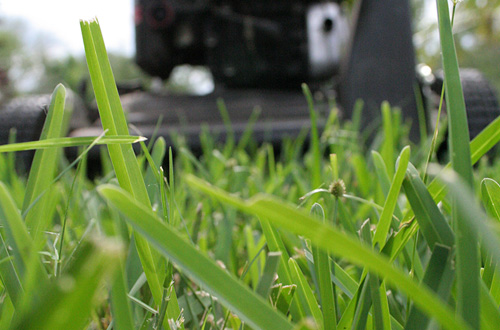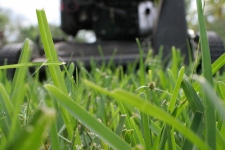
Fortunately, the majority of lawn mower injuries can be prevented by implementing some basic rules and guidelines. The first and foremost of these is education – anyone who is around a mower or using a mower needs to be aware of the inherent dangers that come with the machine. Other rules that should be followed are:
- Children should be at least age 12 years before operating a push lawn mower, and age 16 to operate a riding lawn mower.
- Only use a mower that has protection over hot and sharp parts.
- Riding mowers should have the reverse switch behind the driver, forcing the driver to look behind when placing the machine in reverse.
- Push mowers should have a control that stops forward motion when the handle is released.
- If children must be in the yard during mowing, they should remain at least 20 feet away from the running lawn mower at all times. Ideally, children should not be allowed outside in the yard when the grass is being cut.
- Children should never be passengers on ride-on mowers.
- Always wear sturdy shoes while mowing the lawn – do not wear sandals.
- Remove stones, toys, and debris from the lawn before mowing to prevent injuries from flying objects.
- Always wear eye and hearing protection.
According to the US Consumer Product Safety Commission, approximately 20,000 children are injured each year by lawnmowers, with the majority of injuries occurring on the hands and arms. Annually, riding lawn mowers cause more injuries than push mowers due to the fact that they can tip and roll, which places children at a greater risk of being run over and severely injured.
Some of the most common injuries sustained via lawn mowers are:
Burns – Burns can occur from touching a hot engine, gas tank, or exhaust and can not only damage skin, but can go deeper as well, damaging muscles, ligaments, tendons, and bones.
Cuts – Mower blades are extremely sharp and the lacerations sustained from contact with them can be extremely severe. Typically the hands and feet are the most likely to sustain cuts due to the fact that they’re the areas of the body that can most easily get past the blade protectors.
Broken Bones – Mower blades can also cause broken bones. In fact, open fractures (where the skin over the break is cut or torn) are very common with lawn mower injuries. With riding mowers, crush injuries are a concern as well.
Amputation – Mower blades are sharp enough that they can sever part of an arm, leg, hand, or foot..
If a lawn mower accident occurs, it’s important to seek medical attention right away. If an Emergency Department is where you wind up, your injuries will be evaluated by an ER provider (physician, physician’s assistant, or nurse practitioner) who will stabilize and treat the injury, and provide a comprehensive exam to ensure that no other injuries were sustained. Depending upon the severity of the injury, an orthopaedic surgeon may be consulted during your stay, or you may be asked to follow up with an orthopaedist on an outpatient basis. This allows for physicians who specialize in the treatment of bone, muscle, tendon, and ligament injuries and who can provide the best care for your particular injury.
Here at Prairie Orthopaedic & Plastic Surgery, PC, we offer comprehensive orthopaedic care. From your initial visit all the way through your recovery (including rehabilitation) we’ve got you covered!
source: aaos.org

